- 2024年-02月-16日:唐土名胜图会.初集.6卷(88P)
- 2024年-02月-16日:唐土名胜图会.初集.5卷(75P)
- 2024年-02月-16日:唐土名胜图会.初集.4卷(78P)
- 2024年-02月-16日:唐土名胜图会.初集.3卷(87P)
- 2024年-02月-16日:唐土名胜图会.初集.2卷(54P)
- 2024年-02月-16日:唐土名胜图会.初集.1卷(62P)
- 2024年-01月-13日:彩图版《中国国家地理百科全书》6、青海、宁夏、新疆、香港(106P)
- 2024年-01月-13日:彩图版《中国国家地理百科全书》5、四川、贵州、云南、西藏(122P)
- 2024年-01月-13日:彩图版《中国国家地理百科全书》4、湖北、湖南、广东、广西(106P)
- 2024年-01月-13日:彩图版《中国国家地理百科全书》3、浙江、安徽、福建、江西(106P)
- 2024年-01月-13日:彩图版《中国国家地理百科全书》2、内蒙古、辽宁、吉林、黑龙(106P)
- 2024年-01月-13日:彩图版《中国国家地理百科全书》1、总论、北京、天津、河北(105P)
- 2024年-01月-13日:《中国景色·彩图版》作者:单之蔷(385P)
- 2023年-12月-16日:宣大山西三镇图说.三卷.明.杨时宁编.景明万历时期刊本.玄览堂丛书.1941年(303P)
- 2023年-12月-16日:渝城图.约绘于1850-1900年.法国国家图书馆藏(12P)
- 2023年-12月-16日:行宫座落图.扬州名胜图.江南名胜图.四册.清代刊本(110P)
- 2023年-12月-16日:异域图志.一卷.剑桥大学图书馆藏.明刊孤本(206P)
- 2023年-09月-24日:泛槎图.含续泛槎图等.全集.清张宝撰.道光时期羊城尚古斋刊刻(500P)
- 2023年-09月-24日:法军远征在埃及考察研究作品集之埃及自然史板画(253P)
- 2023年-09月-21日:新镌海内奇观·六册(60P)
- 2023年-09月-21日:新镌海内奇观·五册(59P)
- 2023年-09月-21日:新镌海内奇观·四册(63P)
- 2023年-09月-21日:新镌海内奇观·三册(72P)
- 2023年-09月-21日:新镌海内奇观·二册(47P)
- 2023年-09月-21日:新镌海内奇观·一册(66P)
- 2023年-06月-14日:百幕大未解之谜(181P)
- 2023年-06月-14日:雍和宫集(1~20)(68P)
- 2023年-04月-25日:故宫宽幅照片(48P)
- 2023年-04月-14日:世界美术全集:建筑卷(97P)
- 2023年-04月-08日:中国建筑艺术史 (下册)(665P)
- 2023年-04月-08日:中国建筑艺术史 (上册)(584P)
- 2023年-04月-08日:建筑装修与装饰·中国建筑艺术全集 24(242P)
- 2023年-04月-05日:宅第建筑 4 南方少数民族·中国建筑艺术全集 23(330P)
- 2023年-04月-05日:宅第建筑 3 北方少数民族·中国建筑艺术全集 22(219P)
- 2023年-03月-27日:游遍世界(172P)
- 2023年-03月-27日:宅第建筑 2 南方汉族·中国建筑艺术全集 21(333P)
- 2023年-03月-27日:佛教建筑(2)(南方) (丁承樸)·中国建筑艺术全集(319P)
- 2023年-03月-23日:游遍中国(172P)
- 2023年-03月-16日:宅第建筑1 北方汉族·中国建筑艺术全集 20(325P)
- 2023年-03月-16日:风景建筑·中国建筑艺术全集 19(320P)
- 2023年-03月-10日:私家园林·中国建筑艺术全集 18(328P)
- 2023年-03月-10日:皇家园林·中国建筑艺术全集 17(249P)
- 2023年-03月-05日:道教建筑·中国建筑艺术全集 15(318P)
- 2023年-03月-05日:会馆建筑·祠堂建筑·中国建筑艺术全集 11(299P)
- 2023年-03月-02日:书院建筑·中国建筑艺术全集 10(320P)
- 2023年-03月-02日:坛庙建筑·中国建筑艺术全集 9(333P)
- 2023年-02月-28日:泰晤士世界历史地图集(360P)
- 2023年-02月-27日:清代陵墓建筑·中国建筑艺术全集 8(280P)
- 2023年-02月-27日:明代陵墓建筑·中国建筑艺术全集 7(328P)
- 2023年-02月-25日:元代前陵墓建筑·中国建筑艺术全集 6(313P)
- 2023年-02月-25日:桥梁、水利建筑·中国建筑艺术全集 5(334P)
- 2023年-02月-24日:古代城镇·中国建筑艺术全集 4(317P)
- 2023年-02月-24日:宫殿建筑(3) 沈阳·中国建筑艺术全集(312P)
- 2023年-02月-24日:宫殿建筑(2)(北京)·中国建筑艺术全集(311P)
- 2023年-02月-24日:宫殿建筑(1)(北京)·中国建筑艺术全集(247P)
- 2023年-02月-09日:镇江胜境图暨乾隆御题诗刻.清高宗弘历撰并书.民国拓本(6P)
- 2023年-02月-07日:西湖佳景.湖上扶摇子辑.彩色图绘套印本.1750(22P)
- 2023年-02月-04日:亚细亚大观.照片.亚细亚写-真大观社编.1935-1942(396P)
- 2023年-01月-29日:韩国舆地图.金鸿圭模绘.1893(13P)
- 2023年-01月-29日:《廣輿圖》二卷【明】朱思(237P)
- 2023年-01月-27日:古今历代中华地图(16P)
- 2023年-01月-17日:江戸絵図.鍬形紹真画(6P)
- 2023年-01月-13日:中國博物館藏畫.上海博物館藏畫(128P)
- 2023年-01月-12日:万国博覧会日本館仮図案(25P)
- 2023年-01月-03日:江苏至北京运河全图(13P)
- 2022年-12月-31日:東京真画名所図解.井上探景画(22P)
- 2022年-12月-29日:岸圃大观.乾坤.明彭汝楠辑.崇祯11刊(37P)
- 2022年-12月-24日:Matrícula de tributos.墨西哥.贡品录(32P)
- 2022年-12月-24日:北京皇城图(3P)
- 2022年-12月-17日:海底世界 珊瑚礁和鱼类的天堂(368P)
- 2022年-12月-15日:第八册(清时期)中国历史地图集(142P)
- 2022年-12月-15日:第七册(元 明)中国历史地图集(193P)
- 2022年-12月-15日:第六册(宋辽金)中国历史地图集(131P)
- 2022年-12月-15日:第五册(隋唐五代)中国历史地图集(150P)
- 2022年-12月-14日:第四册(南北朝)中国历史地图集(108P)
- 2022年-12月-14日:第三册(魏晋)中国历史地图集(91P)
- 2022年-12月-14日:第二册(秦汉)中国历史地图集(101P)
- 2022年-12月-14日:第一册(先秦)中国历史地图集(92P)
- 2022年-12月-10日:中国地方志辞典之二(405P)
- 2022年-12月-10日:中国地方志辞典之一(400P)
- 2022年-12月-04日:[典藏国家地理:中国版(下)].龚勋.全彩版(113P)
- 2022年-12月-04日:[典藏国家地理:中国版(中)].龚勋.全彩版(113P)
- 2022年-12月-04日:[典藏国家地理:中国版(上)].龚勋.全彩版(113P)
- 2022年-11月-23日:地理龙穴扼要 第10册(133P)
- 2022年-11月-23日:地理龙穴扼要 第9册(147P)
- 2022年-11月-23日:地理龙穴扼要 第8册(109P)
- 2022年-11月-23日:地理龙穴扼要 第7册(119P)
- 2022年-11月-22日:地理龙穴扼要 第6册(101P)
- 2022年-11月-22日:地理龙穴扼要 第5册(97P)
- 2022年-11月-21日:地理龙穴扼要 第4册(157P)
- 2022年-11月-21日:地理龙穴扼要 第3册(87P)
- 2022年-11月-20日:地理龙穴扼要 第2册(156P)
- 2022年-11月-20日:地理龙穴扼要 第1册(128P)
- 2022年-11月-07日:世界经济地理(245P)
- 2022年-11月-03日:环球国家地理百科全书之七(214P)
- 2022年-11月-03日:环球国家地理百科全书之六(400P)
- 2022年-11月-03日:环球国家地理百科全书之五(400P)
- 2022年-11月-03日:环球国家地理百科全书之四(400P)
- 2022年-11月-03日:环球国家地理百科全书之三(400P)
- 2022年-11月-03日:环球国家地理百科全书之二(400P)
岸圃大观.乾坤.明彭汝楠辑.崇祯11刊
明天启五年(1625),邑人彭汝楠辞官归里,在莆田柳桥隐居,建了被称为十六世纪江南著名园林的“岸圃大观”。当时书画家董其昌书“岸圃大观”字,画有“岸圃大观”。此画被分为若干幅,每幅附有彭汝楠亲笔题跋并印成拓本。此本便是此《岸圃大观》明末拓本。明代莆田林下士大夫,大都占取山水名胜地营建园林,以娱晚景,成为风气。当时最为著名的,又是完全依靠人工建筑的,只有彭汝楠侍郎经营的城南柳桥“岸圃大观”。它并非凭借自然山水,完全用人工凿池造山,布置亭台楼阁,花卉树石,依据中国画的构思,把它造成人间实景。柳桥,古称柳塘,位于莆田城厢区的顶墩村,距市区约1公里,三面临河,沿岸植柳,间栽荔枝。冬去春来,一棵棵柳树呈嫩绿的颜色,好像用碧玉装饰成的一样,从树上垂下数不清的像绿丝带一样的柳条来,放眼望去,全是碧绿的海洋。荔树也一棵连着一棵,每棵的叶子都是新绿的,充满着无限的生机。小草从土里钻出来,嫩嫩的、绿绿的,风轻悄悄的,草软绵绵的。阳光明媚,鸟儿在树上唱着婉转的曲子。澄清的木兰溪水缓缓地流着,鱼儿在柳树的倒影里自由地遨游,成群的鸭鹅也在水中尽情地嬉戏。船行舟走,货来物往,如水上的闹市。偶尔下起毛毛的细雨,柳塘更清新了,故有“柳桥春晓”之称,为莆田二十四景之一。这里有一座桥,名曰“柳桥”,为宋代李富所建。据说,那时,城南以外之人来往县城,须在顶墩渡口乘搭渡船而过,可多次发生沉船亡难的事件。李富耿耿于怀,决心在此造桥,方便民众。于是,他在涵江等地的桥梁竣工后,即四处奔走,多方劝募,又出巨资,亲自主持施工。在他的带领和民众的努力下,桥建成了,因桥的两岸有垂柳成荫,便取名“柳桥”。自此,柳桥代替了柳塘,“柳塘春晓”也成为“柳桥春晓”了。明熹宗天启五年(1625年),邑人、万历四十年进士兵部侍郎彭汝楠辞官归里,在此隐居,建有十六世纪江南著名园林“岸圃大观”,有“烟鬟阁”、“情依楼”、“蕉声馆”、“剩水居”、“漏香廊”、“浮水舫”、“云来树”、“见山寺”、“隐花阁”、“寸草庵”及“桂园”、“荔径”、“壶天”、“樾庵”诸景。明末清初,彭汝楠的儿子士瑛,参加了朱继祚领导的抗清义军,收复了兴化城。清顺治三年(1646),清兵攻破兴化城后,这一园林被夷为平地,而今荡然无存了。岸圃的存在只短短的二十二年。
In 1625, Peng Runan, a native of Putian, resigned from office and went back to live in seclusion in Liuqiao, Putian. He built the “Grand View of the Bank Garden”, which is known as a famous garden in the south of the Yangtze River in the 16th century. At that time, Dong Qichang, a calligrapher and painter, wrote the word “Grand View of the Bank” and painted it with “Grand View of the Bank”. This painting is divided into several pieces, each with Peng Runan’s own inscription and postscript and printed into rubbings. This is the rubbings of the “Grand View of the Bank” at the end of the Ming Dynasty. In the Ming Dynasty, most of Putian Forest Corporal Officials took scenic spots to build gardens to entertain the late scenery, which became the custom. At that time, the most famous one was the “Grand View of the Bank Garden” of the willow bridge in the south of the city, which was completely built by man. It does not rely on natural mountains and waters. It is entirely made of man-made ponds, pavilions, flowers, trees and stones. According to the idea of Chinese painting, it is created into a real world scene. Liuqiao, formerly known as Liutang, is located in Dingdun Village, Chengxiang District, Putian, about 1km away from the urban area. It faces the river on three sides, with willows planted along the bank and lychees planted in between. As winter passed and spring came, willow trees were green, as if they were decorated with jasper. Countless willows like green ribbons hung down from the trees. Looking around, they were all green oceans. Litchi trees are also one by one, and the leaves of each one are green and full of infinite vitality. The grass comes out of the soil, tender and green, the wind is quiet, and the grass is soft. The sun was shining brightly, and the birds were singing melodies on the trees. The clear Mulan Stream flows slowly, the fish roam freely in the reflection of willows, and the flocks of ducks and geese also play happily in the water. Ships go by boat and goods come and go like a busy market on the water. Occasionally, it drizzles, making Liutang more fresh, so it is called “Spring Dawn of Liuqiao”, one of the twenty-four sights in Putian. There is a bridge named “Liuqiao”, which was built by Li Fu of the Song Dynasty. It is said that at that time, people from outside the south of the city had to take a ferry at the Dingdun Ferry to go to and from the county, and many shipwrecks could occur. Li Fu was deeply worried and determined to build a bridge here for the convenience of the people. Therefore, after the completion of bridges in Hanjiang and other places, he ran around, solicited funds from many parties, and paid huge sums of money to personally preside over the construction. Under his leadership and the efforts of the people, the bridge was built. Because there are weeping willows on both sides of the bridge, it was named “Liuqiao”. Since then, Liuqiao has replaced Liutang, and “Liutang Spring Dawn” has become “Liuqiao Spring Dawn”. In 1625, the fifth year of the Heavenly Apocalypse of Emperor Xizong of the Ming Dynasty, Peng Runan, a local soldier, resigned from his post in the fortieth year of Wanli’s reign. He lived in seclusion here. There was a famous garden in the south of the Yangtze River in the sixteenth century, the “Anpu Grand View”, including the “Yanzi Pavilion”, “Qingyi Pavilion”, “Jiaosheng Pavilion”, “Yushui Residence”, “Liuxiang Corridor”, “Floating Boat”, “Yunlai Tree”, “Jianshan Temple”, “Yinhua Pavilion”, “Cuncao Temple”, and “Guiyuan Garden”, “Lijing” “Pot Sky” and “Yue Temple”. At the end of the Ming Dynasty and the beginning of the Qing Dynasty, Shi Ying, Peng Runan’s son, joined the anti Qing Rebellion led by Zhu Jizuo and recovered Xinghua City. In the third year of Shunzhi’s reign in the Qing Dynasty (1646), after the Qing army attacked Xinghua City, this garden was razed to the ground, and now it has disappeared. The existence of shore nursery is only 22 years.
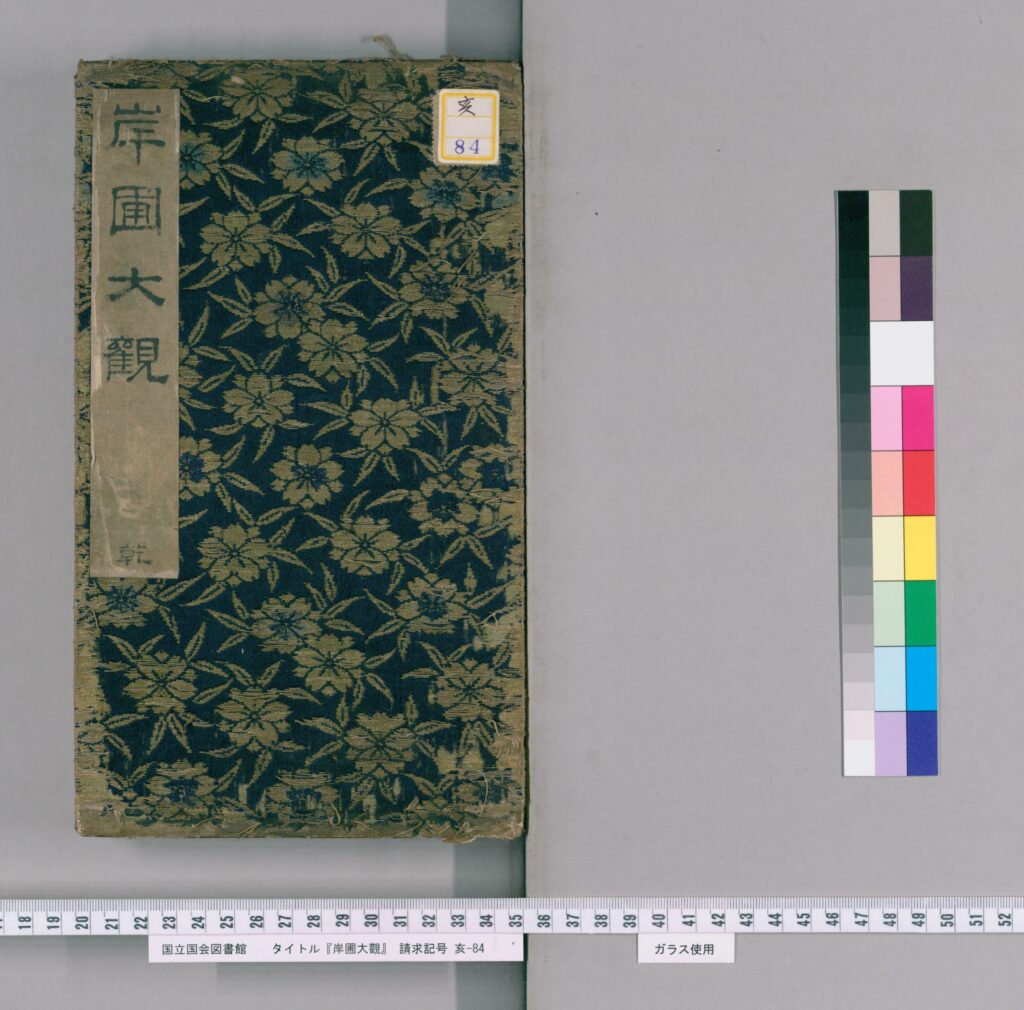


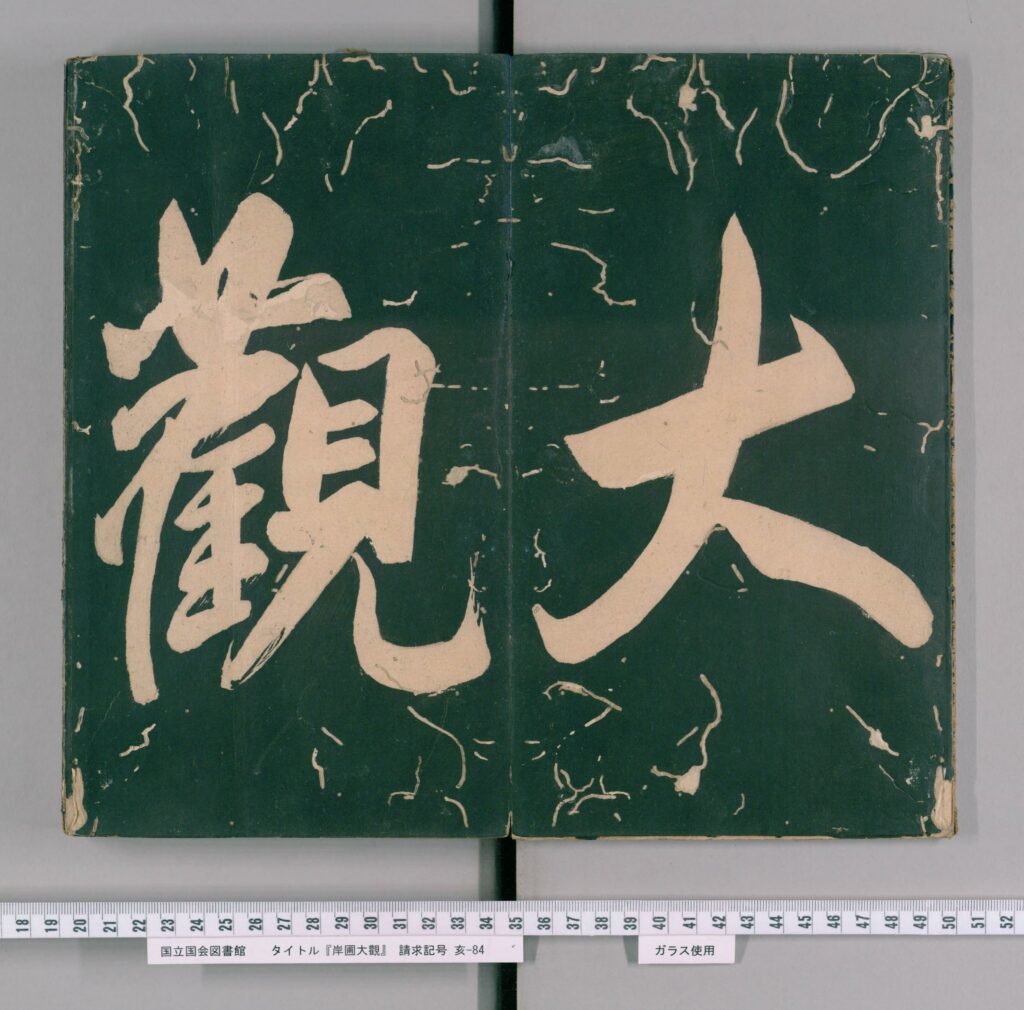
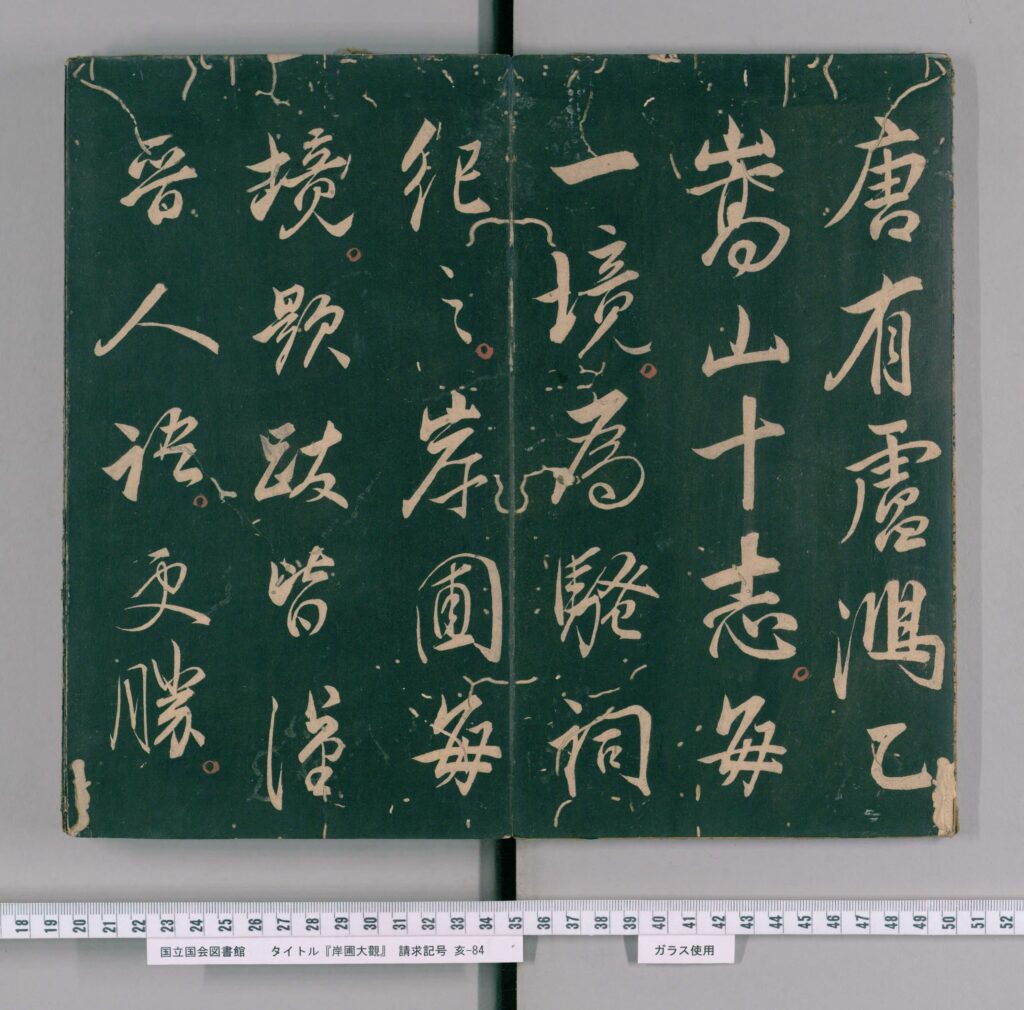

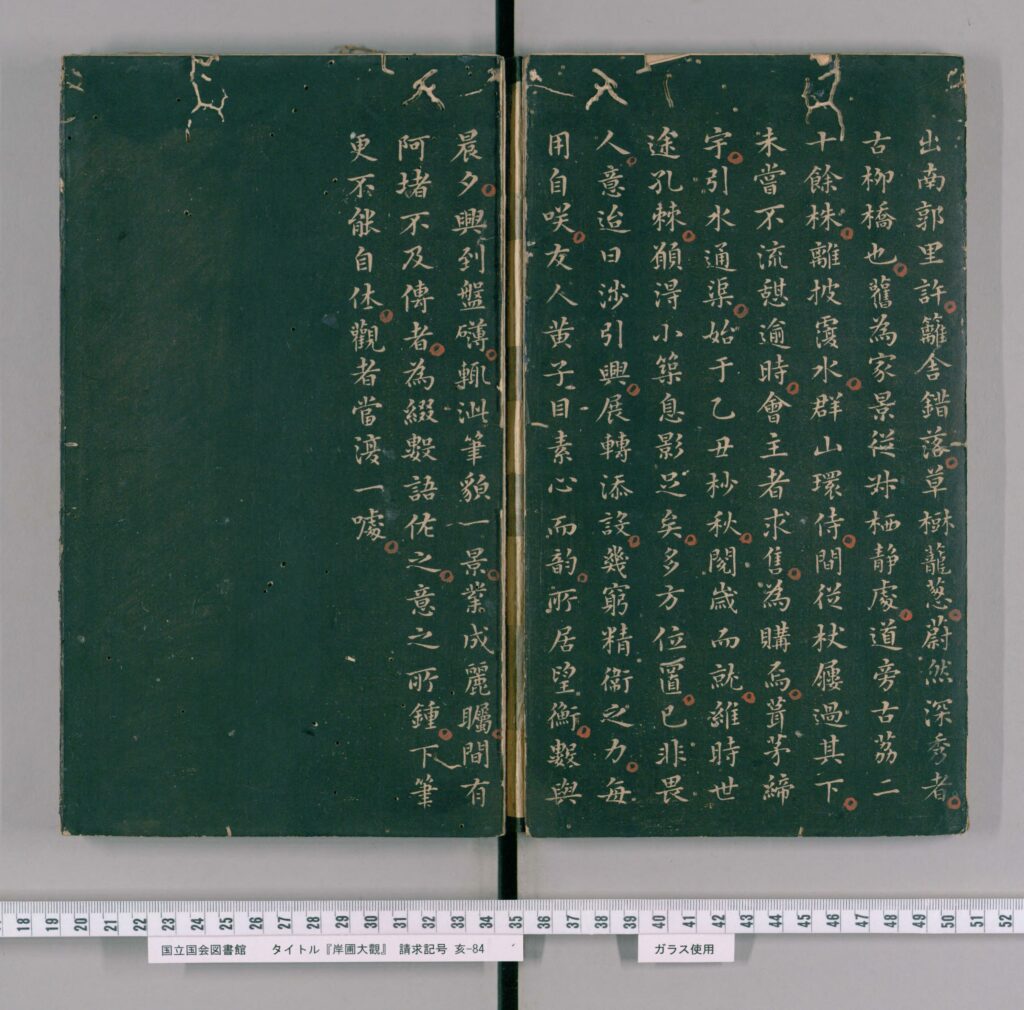
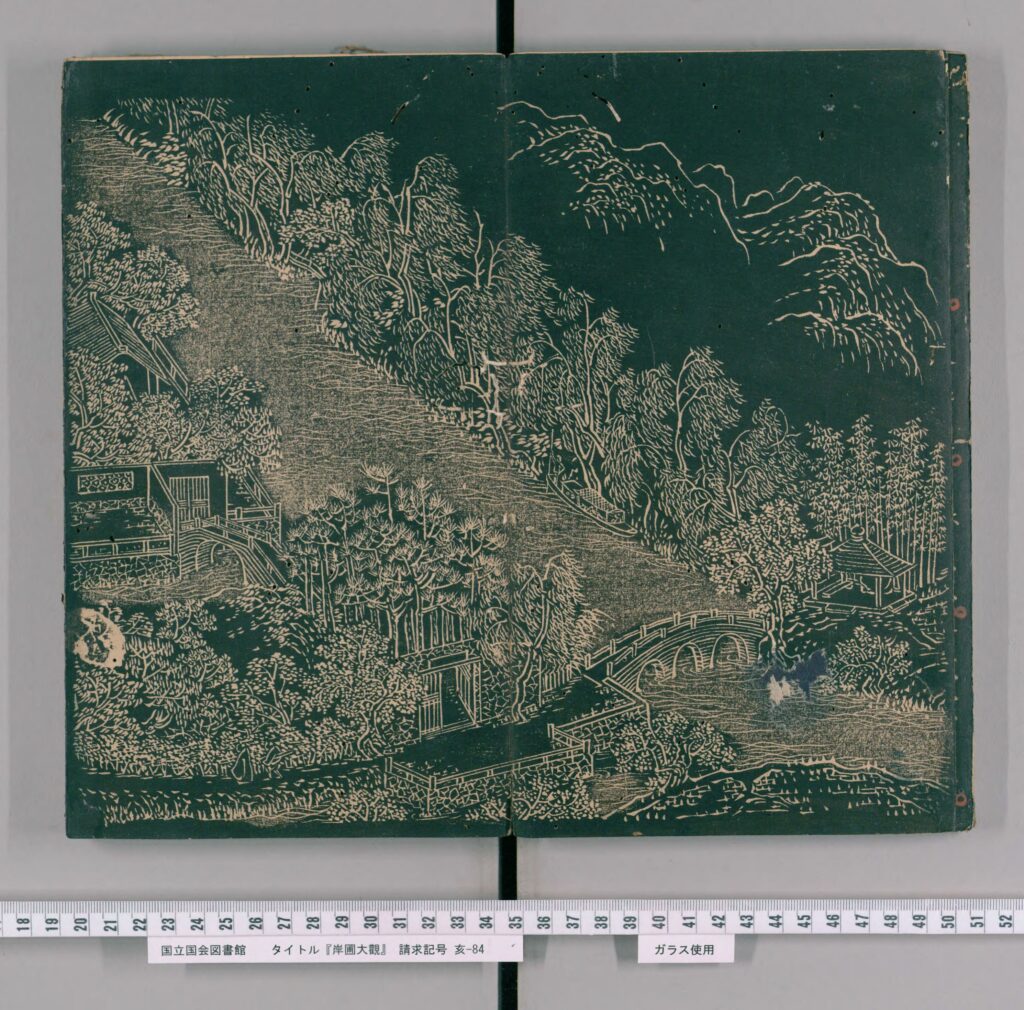
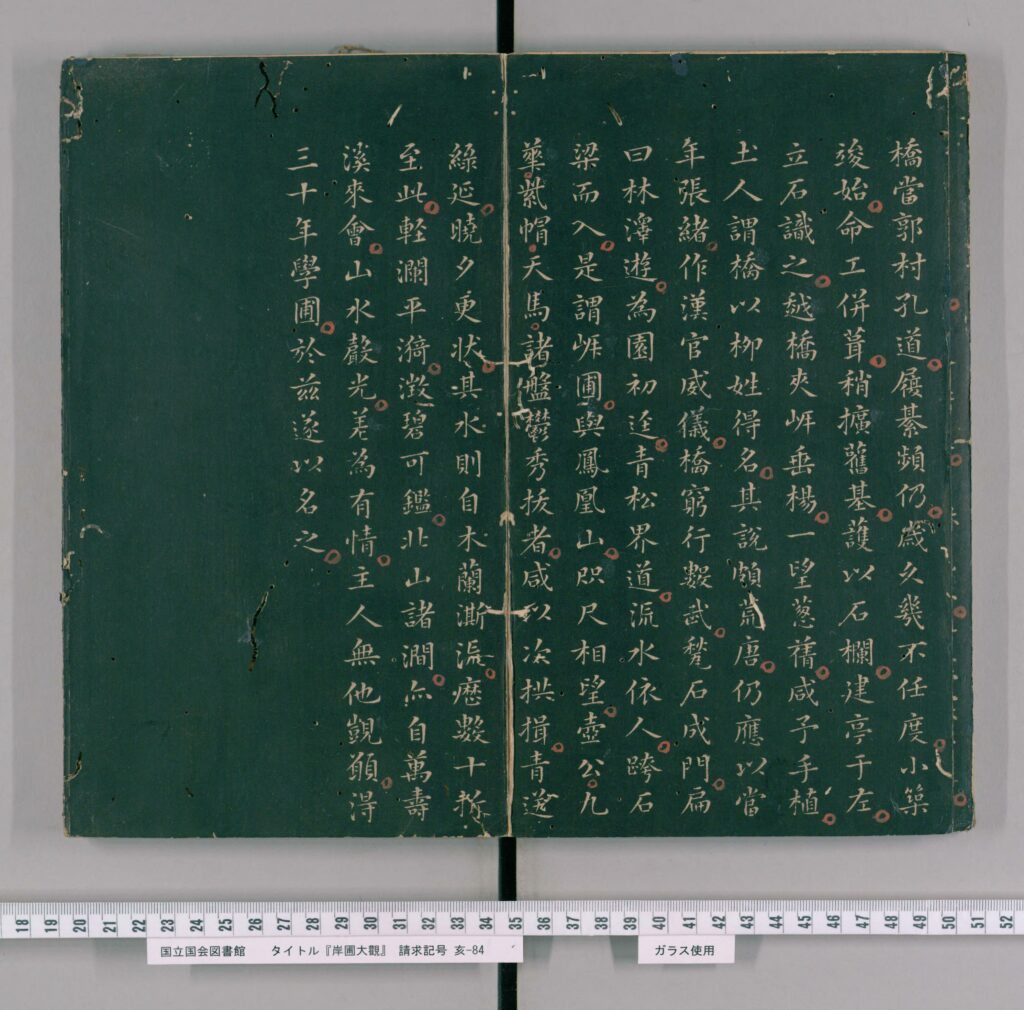



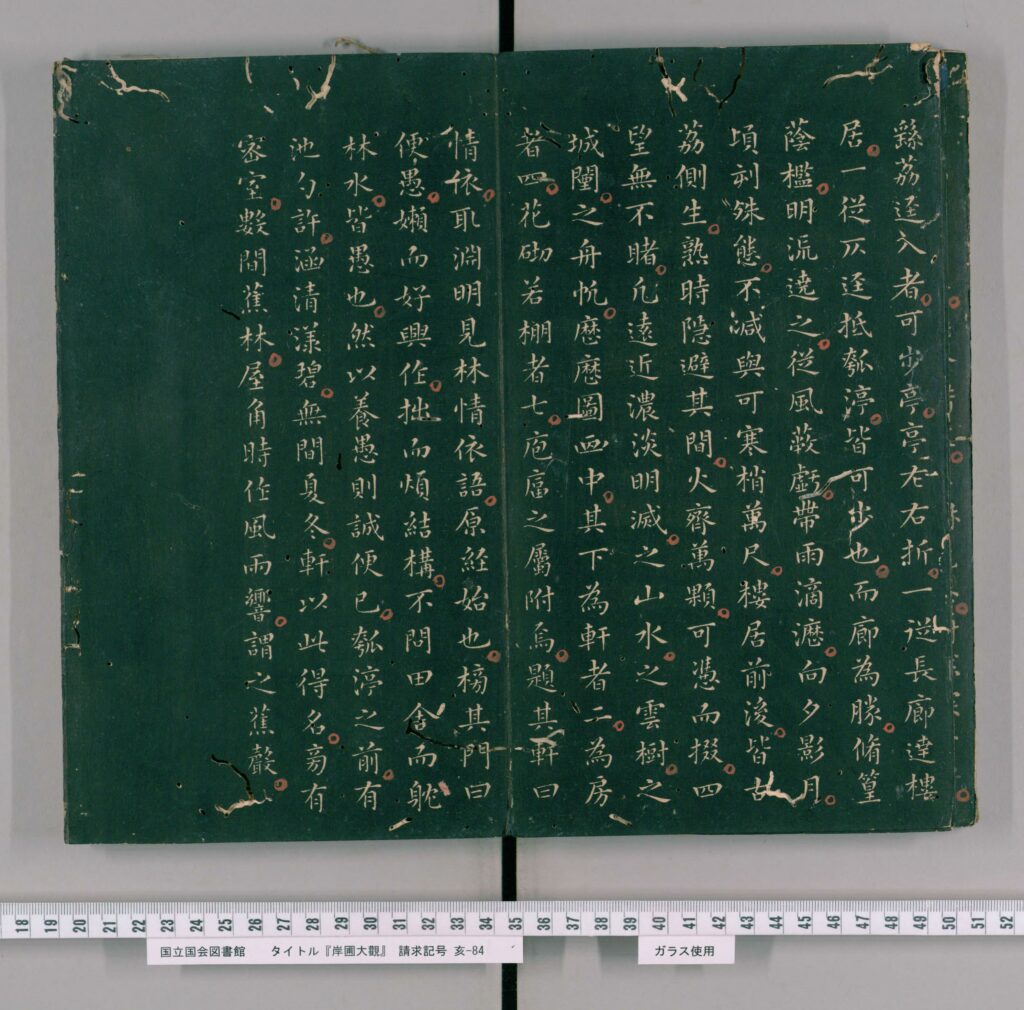
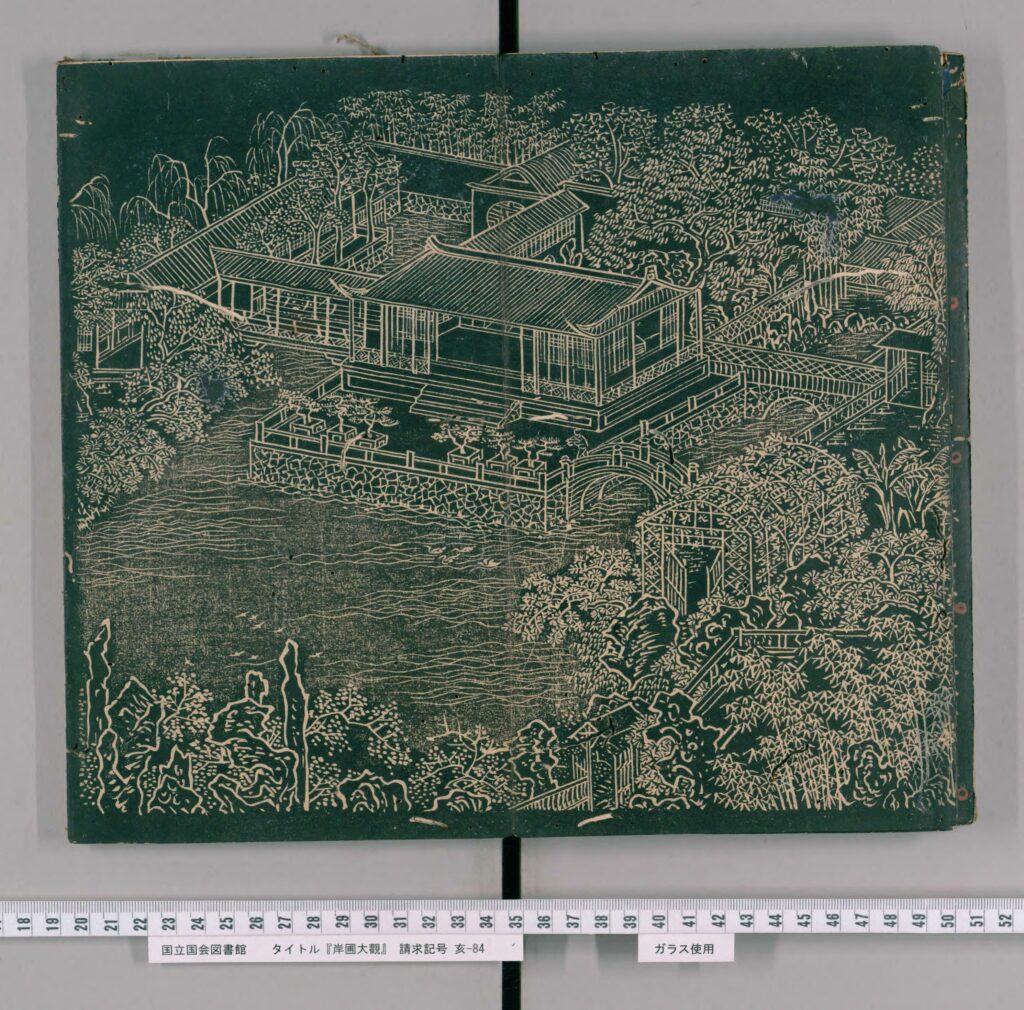
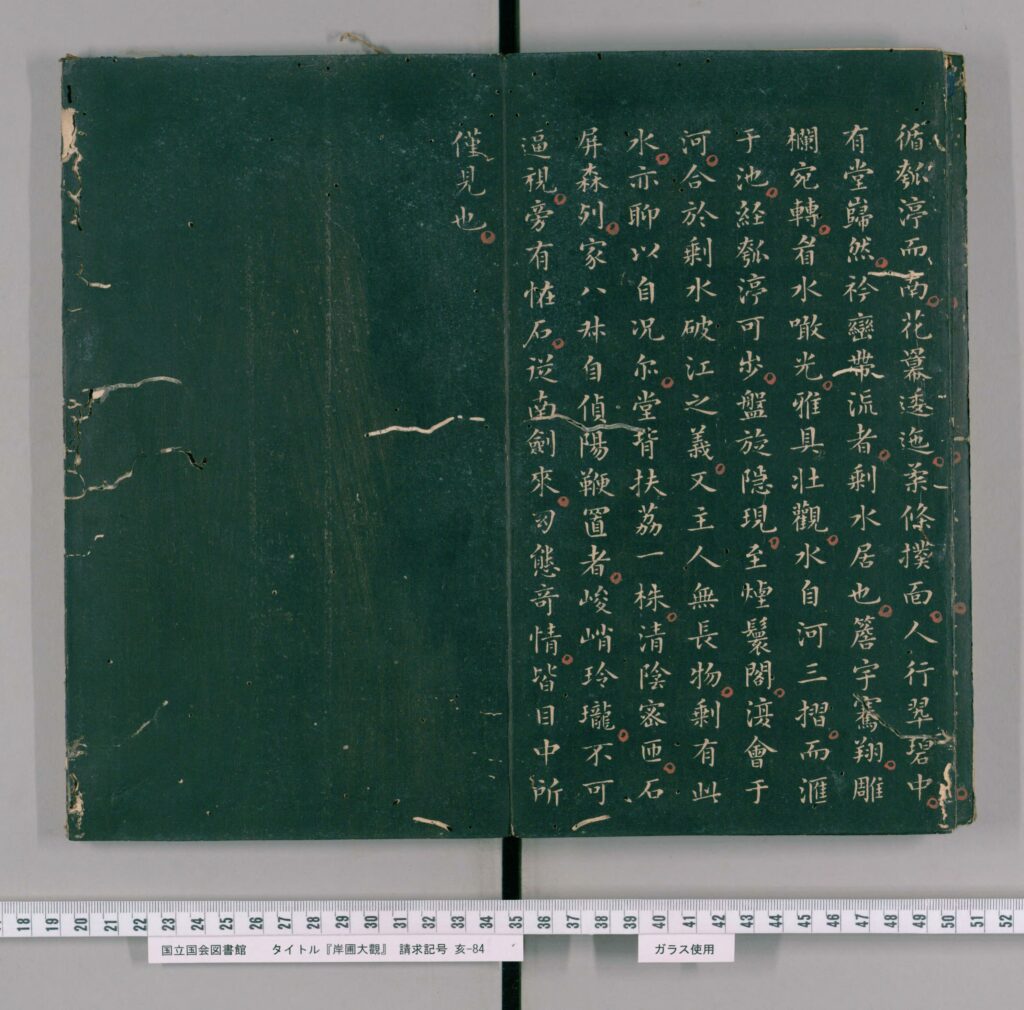
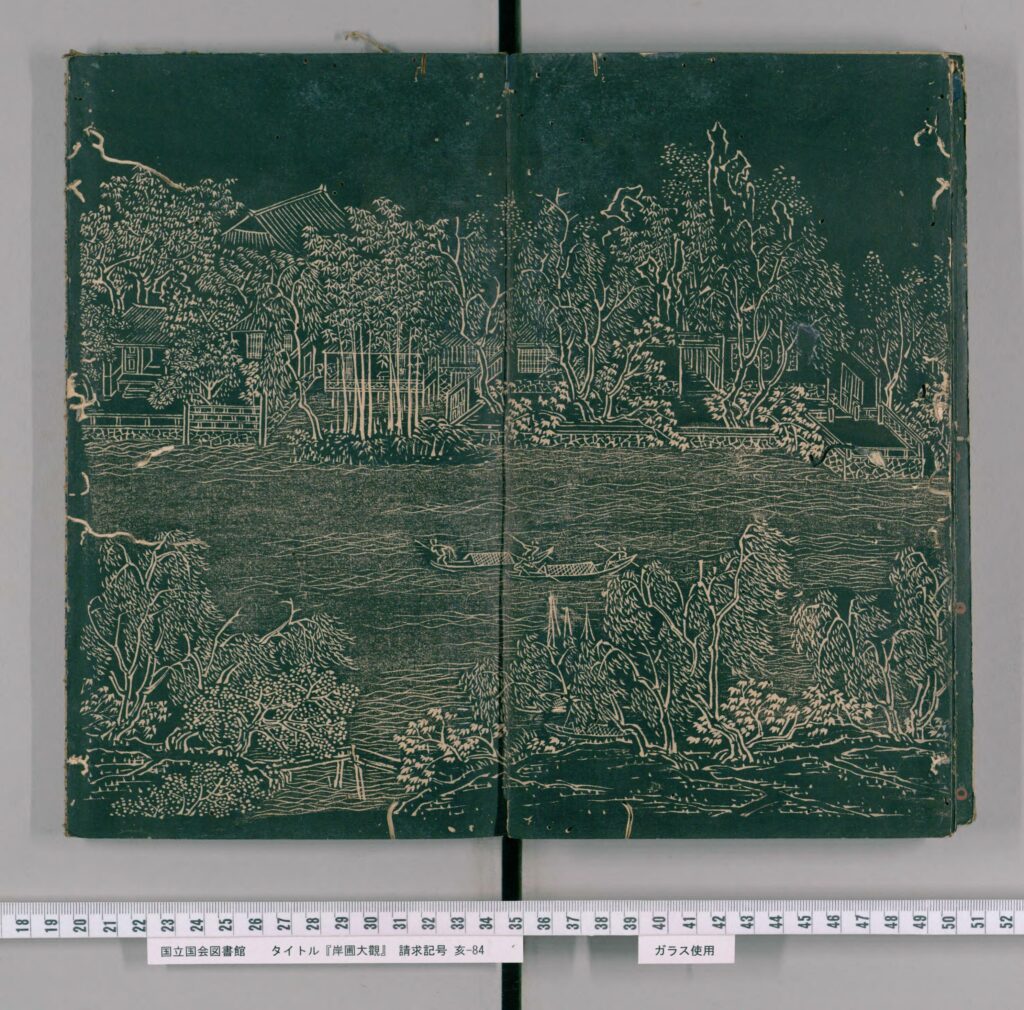
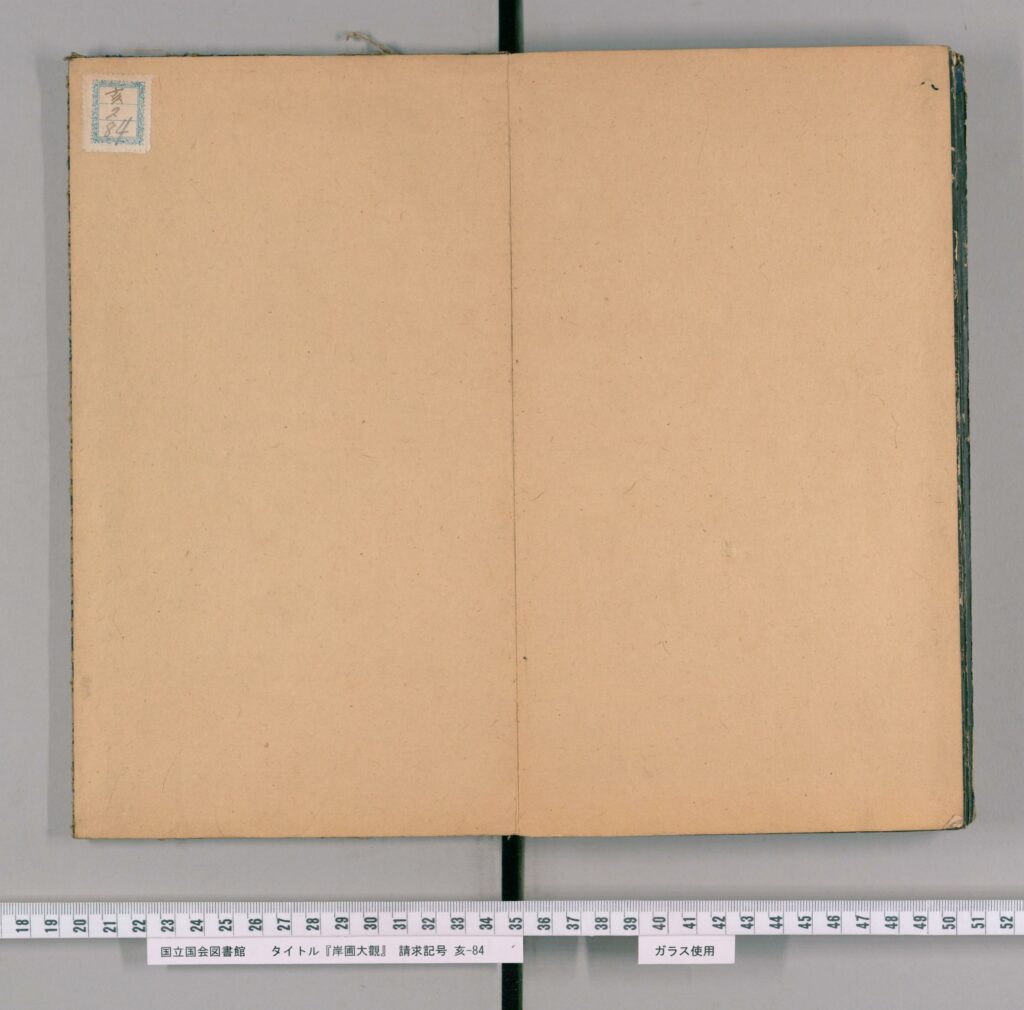
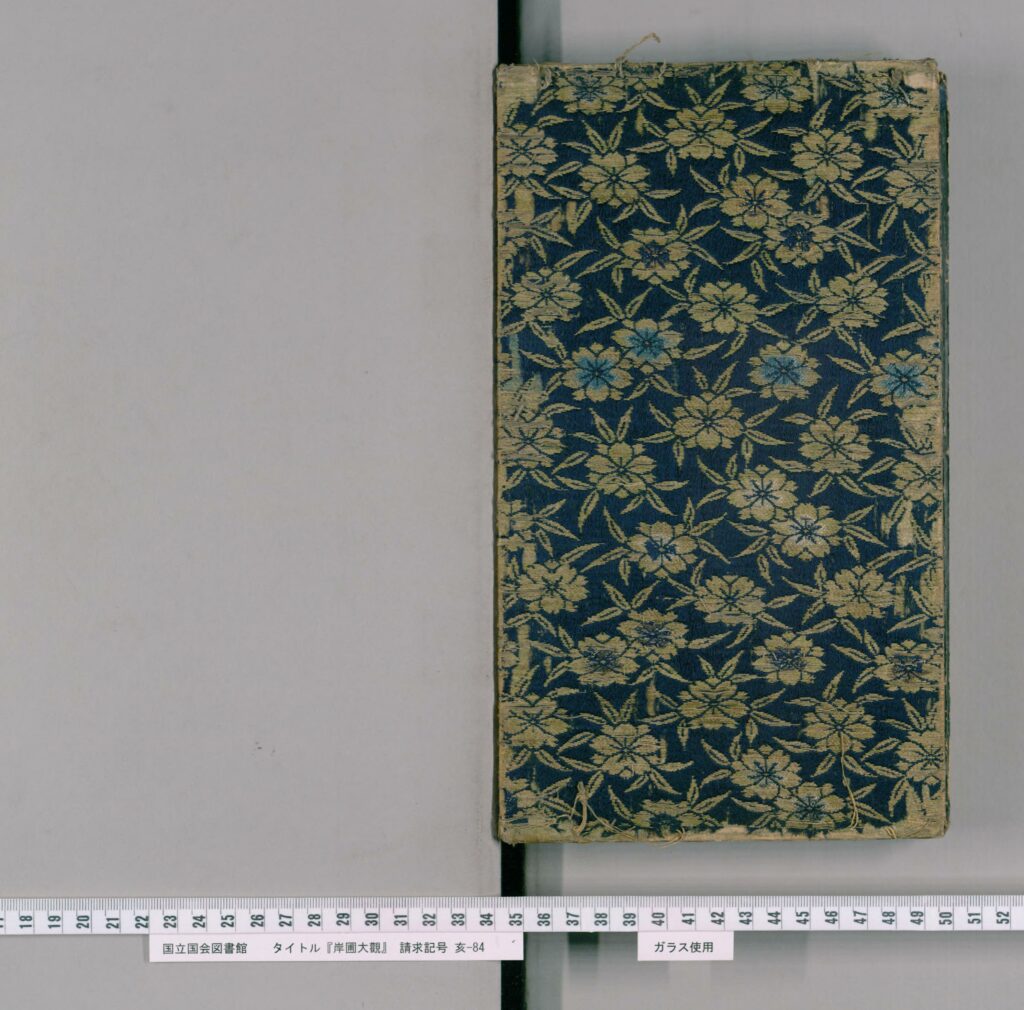



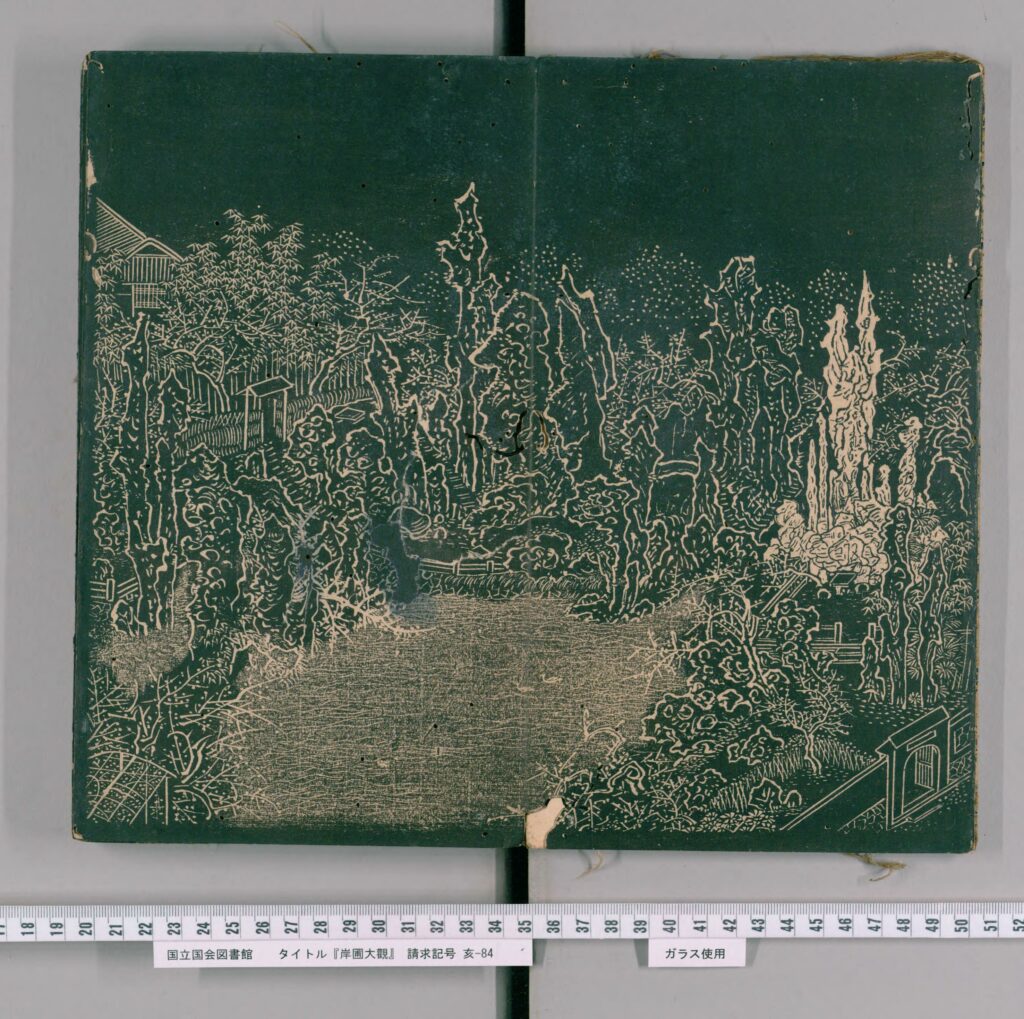

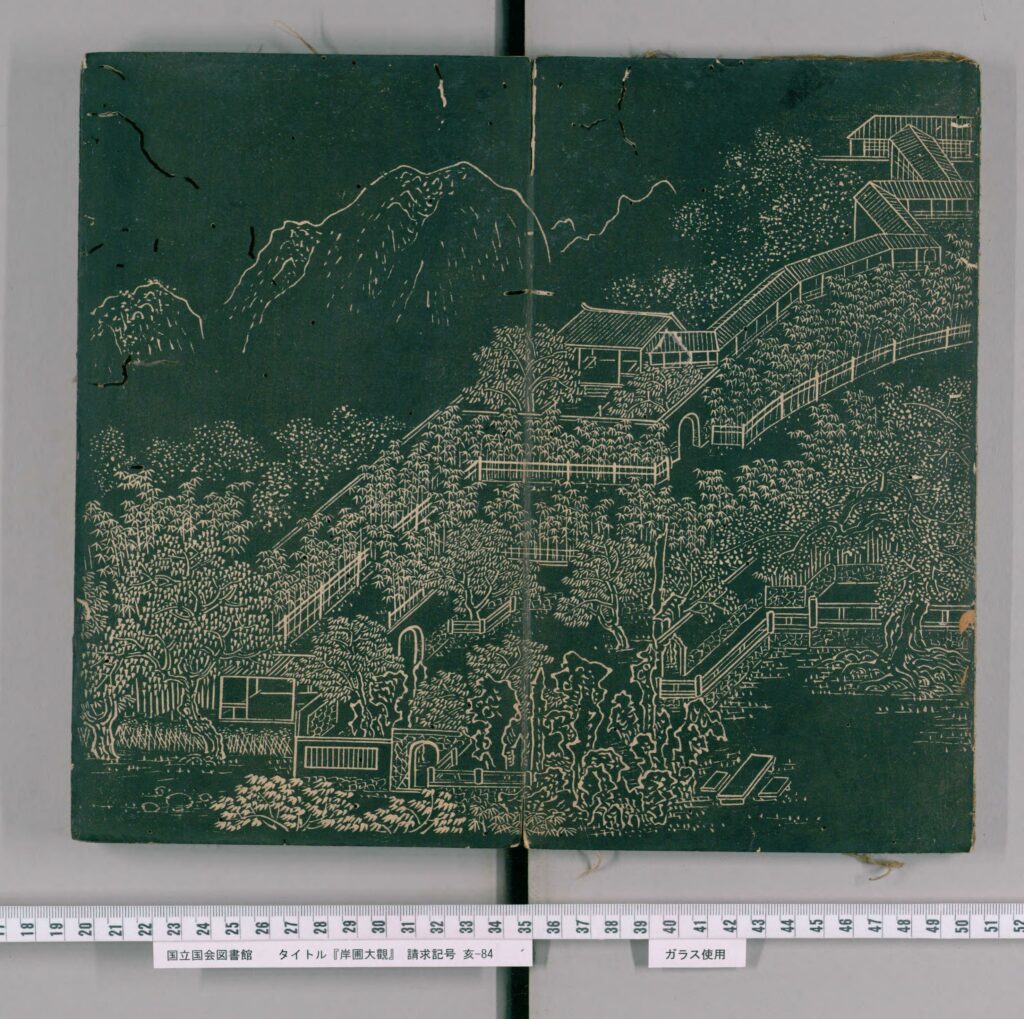
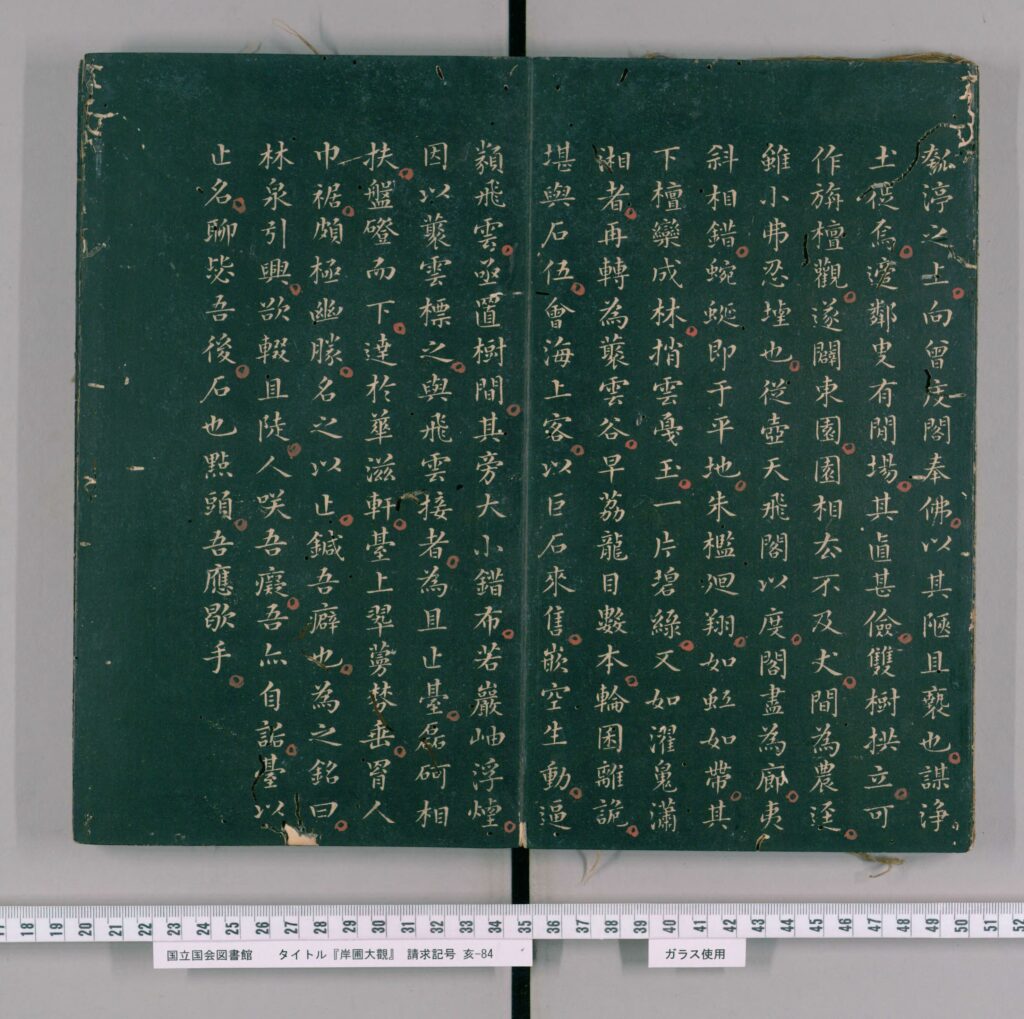


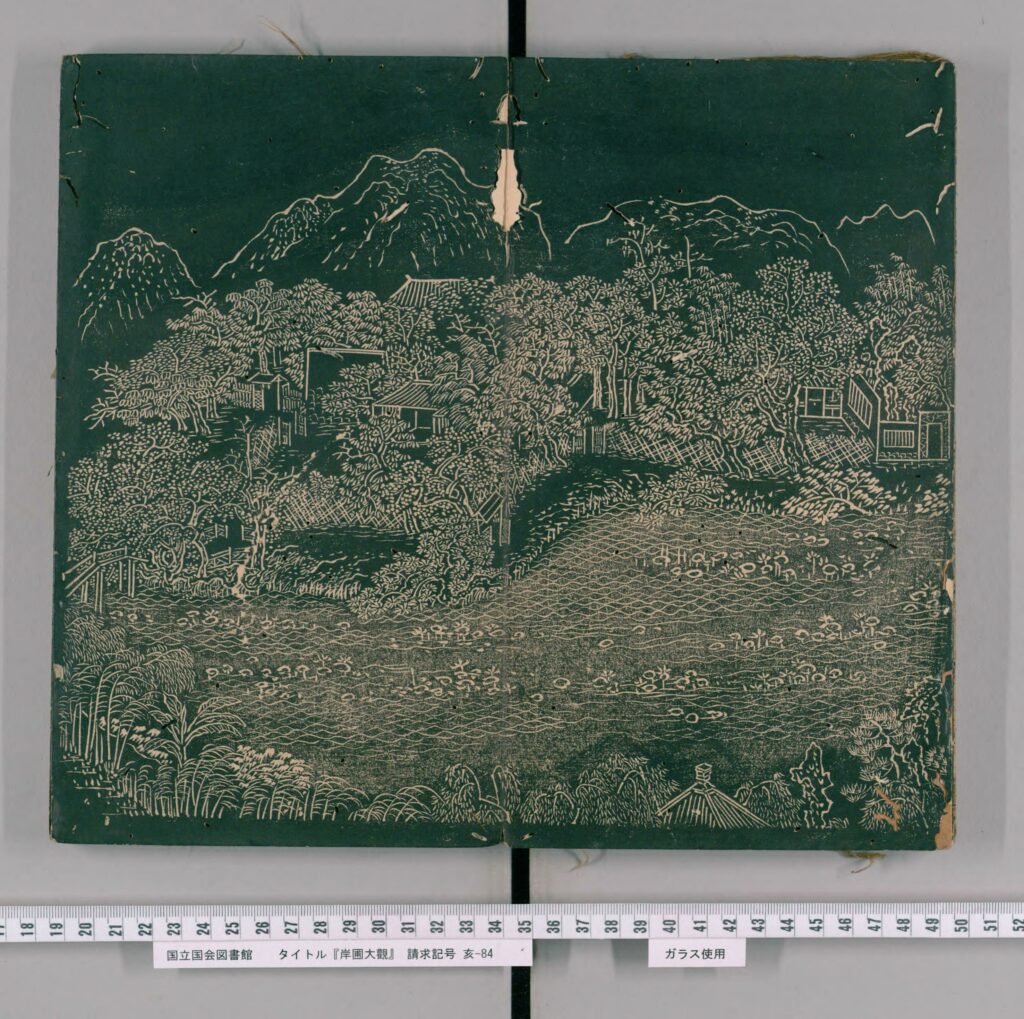




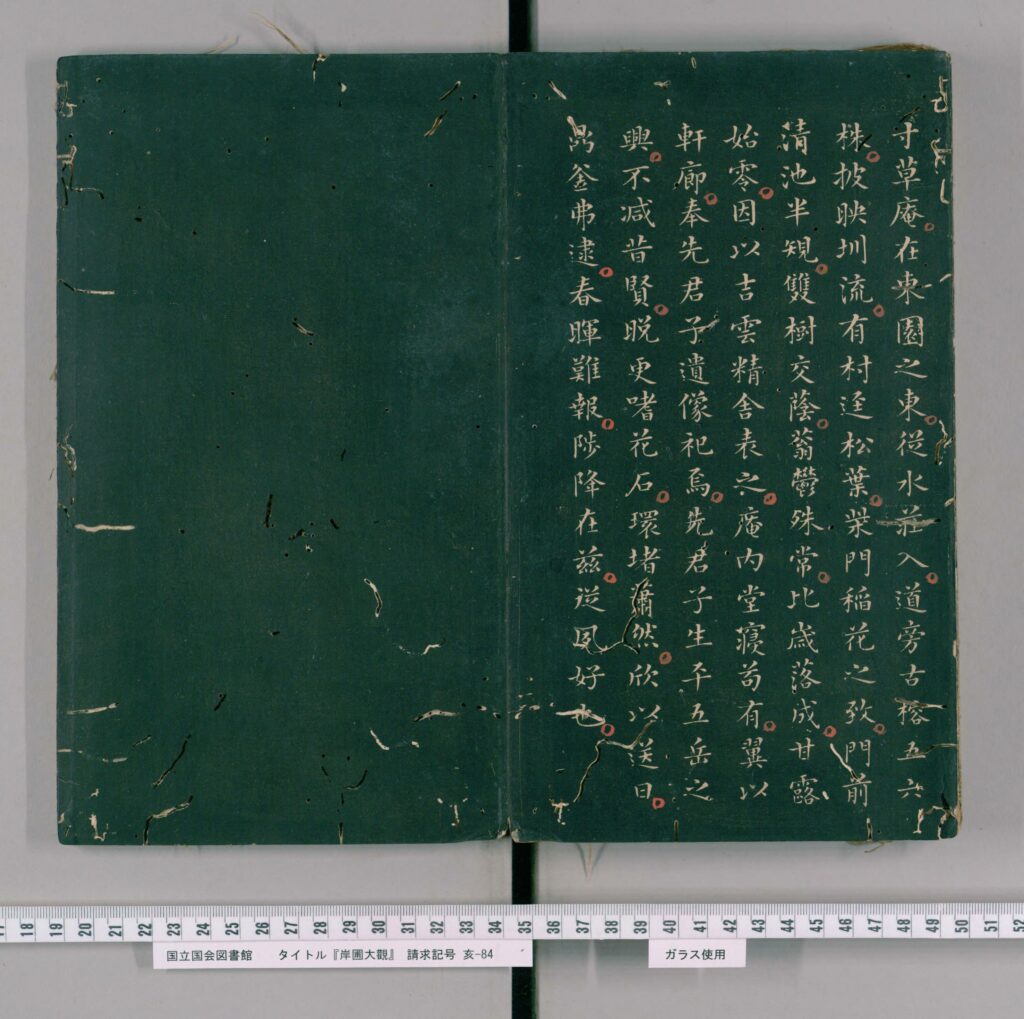

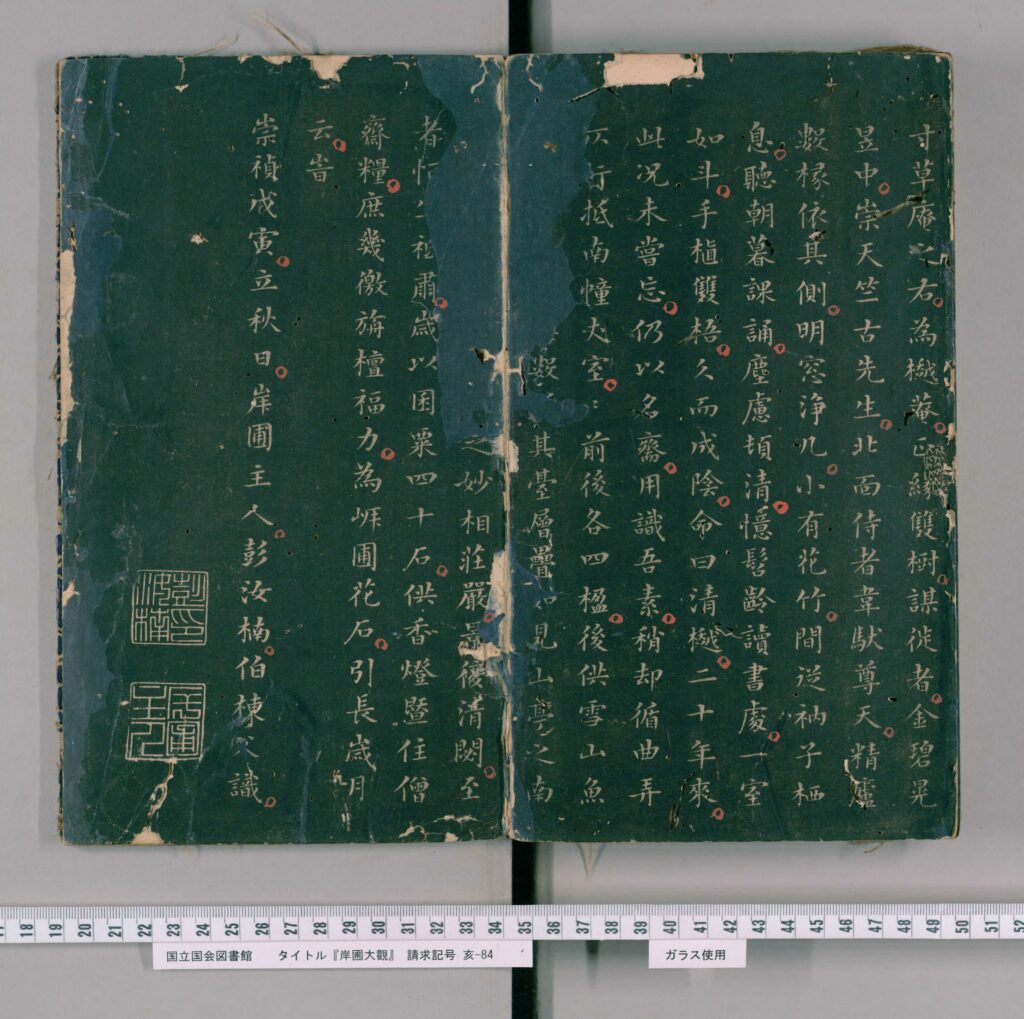
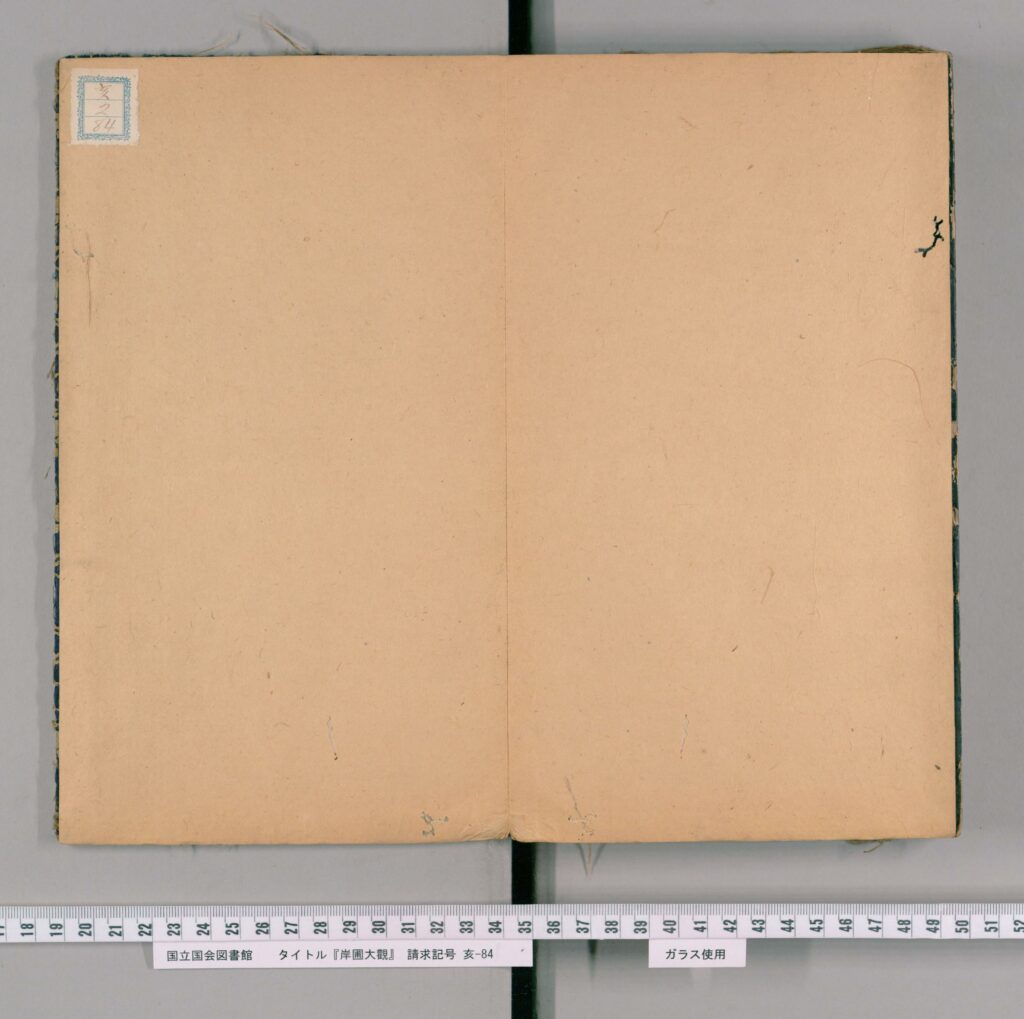
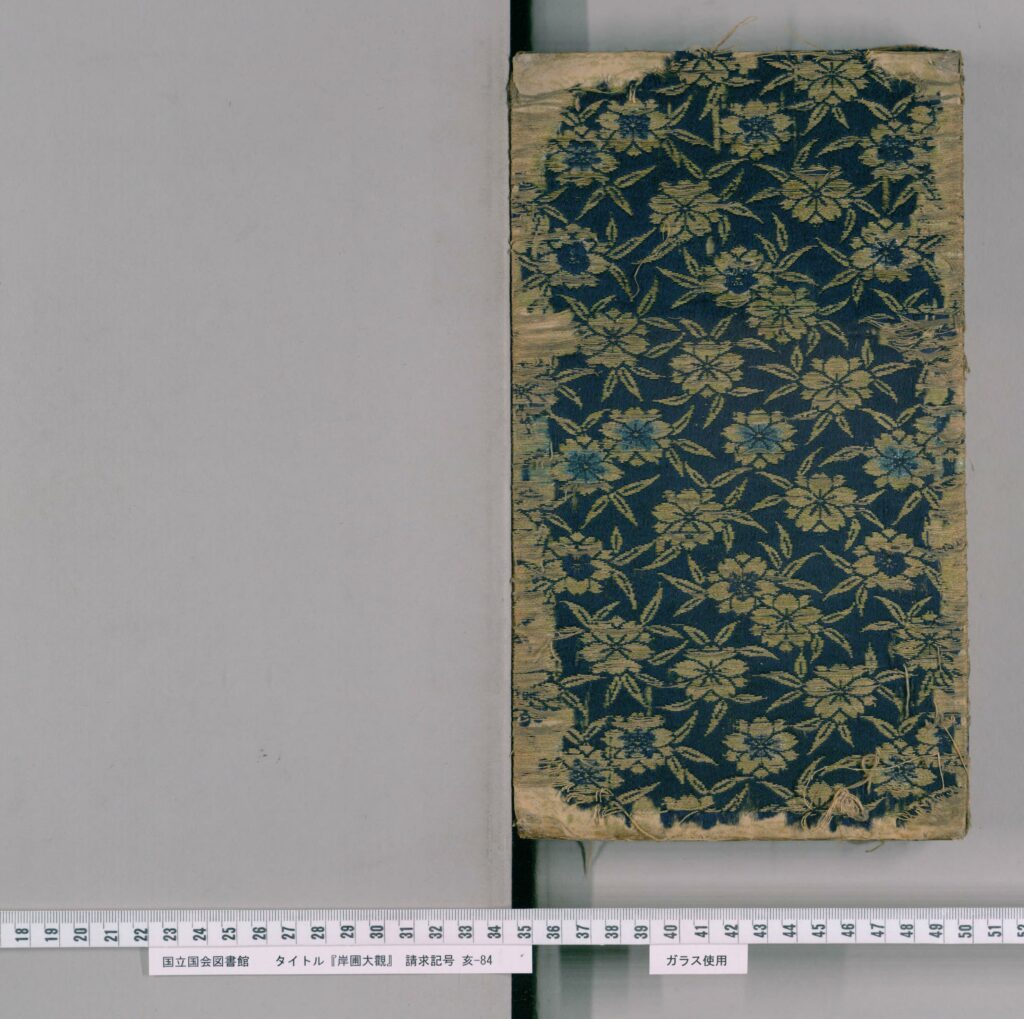
Record记录 Region地理 37P 岸圃大观.乾坤.明彭汝楠辑.崇祯11刊
历史上的今天 ( 1 ):
可点 ➠ 2022年-12月-29日 ➠ 147 s ➠ ♥ 0

